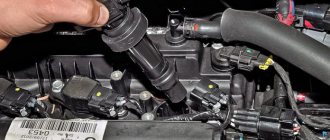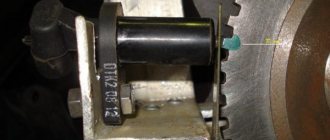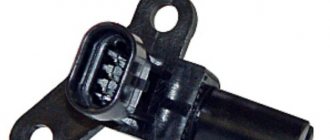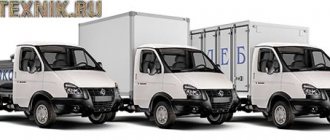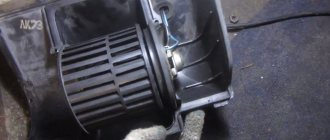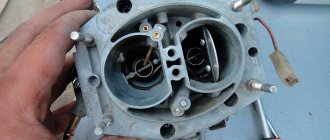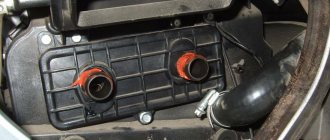The production vehicles are considered one of the most popular light-duty trucks in the CIS countries. This model entered mass production in 1994. Since then, several modifications and improvements have been released to improve reliability, service life and ease of use.
Modifications to the Gazelle engine are also not uncommon. The most popular among them can be identified:
- engine ZMZ-402;
- engine ZMZ-405;
- engine ZMZ-406;
- engine ZMZ-409;
- UMZ-4216 engine;
- Cummins 2.8 engine.
Each of them has its own characteristics and its own modifications. It should be noted that even experienced engine repair technicians sometimes get confused about them. What can we say about ordinary drivers? To correctly buy spare parts for engines, you need to know some features. This will be discussed in this article.
Engine ZMZ-402
ZMZ-402 is a modification of the GAZ-24D engine. The main components, as well as elements of the power unit, have been improved. This is a 4-cylinder carburetor engine with a volume of 2.5 liters. Its fuel consumption is 13.5 l/100 km in the urban cycle.
Among the modifications of the ZMZ-402 engine are:
- ZMZ-4021.1 - mainly used on off-road vehicles produced by GAZ and UAZ.
- ZMZ-4025.1 is a carburetor gasoline engine with valves located in the upper part of the cylinder head.
- ZMZ-4026.1 is a model with a carburetor, in the upper part of which there are exhaust and intake valves (can be found on some GAZ minibuses).
The latest modification of the 402 engine complies with the Euro-4 standard.
GAZ 33023 Gazelle-Farmer (produced since 1995).
Engine ZMZ 405 2.5 l.
This motor was created based on the example of the 406, the ZMZ 405 was simply “edited”.
The length of the cylinder blocks remained the same, the inter-cylinder bridges became much thinner, and the piston diameter was increased by 3.5 mm. In general, nothing else has changed: the motor block remains the same, there are no other special additions. The only thing is that the horsepower has increased by 7. And that’s all, otherwise it’s the old 3M3 406.
- Chain hydraulic tensioners of the gas distribution mechanism. The timing belt jams, noise appears, and the chain itself is often damaged.
- Overheat. Temperature problems often occur. It is necessary to check the radiator and the presence of cooled liquid.
- Oil is leaking.
- Constant knocking. Again, hydraulic compensators, which are designed for 50,000 km. create a knock.
- The engine stalls. This problem usually occurs due to a problem with the wires.
All the shortcomings are the same as the 3M3 406, every single one, there are no changes on this side. But I can say that if you have a question about which engine is better for a gazelle (meaning 405 and 406), then of course it’s better to go with the 405.
Modified 405 engine parts include carburetor and engineering.
The disadvantages of the engine repeat the disadvantages of its predecessor, so we can say that the 405 is the second 406, just younger.
Engine UMZ 421 / 4213 / 4215 / 4216 / 4218 2.9 l.
This engine is already more serious than the previous ones, but, of course, it also has its drawbacks.
This engine is considered one of the best; it is a reconstruction of the GAZ-21 model. The fuel supply here is injection, which is very, very good. There is already a larger volume here, and there are also exhaust valves. UMP are not particularly different from ZMZ (well, the fact that the plants are different - Zavolzhsky and Ulyanovsk - is understandable), but still there is a difference.
UMZ-421 has a high block strength, because the cartridges are no longer made wet, as before, but dry. The cylinder diameter here is 100 mm (compared to the 92nd diameter of the ZMZ 406). The pistons are shifted in the UMP by 7 mm, and the packing, which always gets in the way of everyone, has been replaced with a rubber cuff. In principle, these are all innovations, and they are not particularly different from the 1956 engine. Except with a smart presentation.
There is one big drawback - the lack of hydraulic compensators, so every 10,000 kilometers you need to adjust the valve clearance. This UMZ-421 is similar to the 402.
Malfunctions and technical problems are completely identical to ZMZ-402. In principle, the motors are made virtually the same, so this is what happens. The only problem that was solved was the problem with the padding, which was replaced with rubber. But in general, all the trembling, vibration, knocking - all this remains. The lack of hydraulic compensators also means that every 10,000 km you will have to pause your trips.
But why be surprised - the motor is already 70 years old, so criticism here, in my opinion, is inappropriate.
Engine ZMZ 511 (produced since the 80s)
This engine is already quite advanced, and uses a highly turbulent combustion chamber and helical inlet ports. That is, the fuel burns very, very quickly, and it also burns completely. Engine performance has been improved, and gasoline consumption at low speeds has been reduced.
Engine ZMZ-405
The 405 Gazelle engine is used for cars produced by GAZ. It is part of the ZMZ 406 series engine family. This is a fuel-injected 4-cylinder engine with a displacement of 2,464 cc. cm.
Among the available modifications, the following should be highlighted:
- ZMZ-4052.10;
- ZMZ-40522.10;
- ZMZ-40524;
- ZMZ-40525;
- ZMZ-4054.10.
The engine is used in GAZ cars of the GAZ-31102, GAZ-31105, GAZ Gazelle and GAZ Sobol models, as well as some Fiat models.
The most modern ZMZ-405 Euro-3 engine meets international standards. All toxicity standards were taken into account.
Main models of the family
Gazelle vehicles have been produced since 1994. They are produced by the Gorky Automobile Plant. These are light-duty trucks that are used in construction, transporting various goods, transporting food to stores, and fuel in private destinations.
Let's see what modifications were released and whether they are still being manufactured. We will also find out what engine models were installed on this or that truck.
Attention! The permitted weight for transporting goods on Gazelle vehicles is 3.4 tons. The car can be driven by a driver who has a category “B” license. However, to modify the Gazelle passenger minibus, category “D1” will be required.
Engine ZMZ-406
The 406 Gazelle engine has been in mass production since 1996. Usually installed on Gazelle, as well as Volga passenger cars. The 406 engine is quite labor-intensive to operate due to the presence of a complex fuel supply system, as well as an electronic control system. It has 4 cylinders and a displacement of 2.28 liters, and its rated power is 106.6 kW. Both an injection fuel system and a carburetor are used.
There are 3 popular modifications of the ZMZ-406 engine:
- ZMZ-4061.10 - carburetor internal combustion engine with 76 gasoline (considered obsolete).
- ZMZ-4062.10 is the most common version with an injection engine (installed on Volgas and Gazelles).
- ZMZ-4063.10 is one of the newest modifications, which runs on 92 gasoline and uses a carburetor fuel system.
ZMZ-406 is very popular and is considered an excellent choice for Gazelle and Sobol.
GAZ 3302 Gazelle. Onboard (manufactured since 1994).
Engine ZMZ 402 2.45 l.
This is the most famous engine for a gazelle. But its modified “Brothers” are also suitable for the Volga.
The engine consists of an aluminum block, there are also wet liners made of cast iron. The movement of the valves is carried out using rods and rocker arms.
Now about the disadvantages:
- Rear crankshaft oil seal. This lubricated rope begins to break after 2500 rpm and the oil begins to leak. You can, of course, replace the oil seal, but it will last you until the next 2500 rpm. "Crazy" design. The design of the engine, like the carburetor too, is very “crooked”. The liquid mixture is supplied unevenly to the cylinders, so there is constant twitching and shaking.
- Knocks. Usually a knock is heard due to the valves, so it is advisable every 15,000 km. adjust the valve clearances so that there is no such knock. Some solve the problem using hydraulic compensators.
- Constant vibration in the engine. Most often, vibration is caused by an airbag (more precisely, several), but it may also be a problem with the carburetor or ignition system.
- Overheat. Because the temperature rises too high, the washers begin to be pressed in, and the nuts are held much weaker. To avoid this, you need to tighten the gaskets in a timely manner.
Naturally, the list of these shortcomings can be enumerated forever, but you need to understand: the engine is not new, and for its age it is quite good. Spare parts are available and cheap, so there are no problems with this.
Engine ZMZ 406 2.3 l.
This engine is the predecessor of the previous one. It is much newer and, of course, better quality.
The aluminum block has now been replaced by cast iron, the camshafts are located at the top, and there are now two of them. Engine with 16 cylinders. They also solved the biggest problem that the ZMZ 402 2.45 liter engine had - hydraulic compensators finally appeared. And now you don’t need to adjust the valves every time.
- Chain hydraulic tensioners of the gas distribution mechanism. The timing belt jams, there is no vibration, noise appears. Sometimes the chain itself can become damaged.
- Overheat. For some reason, this particular model constantly has problems with temperature. It is necessary to check the radiator and the presence of cooled liquid.
- Oil is leaking. These could be oil scraper rings and seals.
- Constant knocking. Typically, knocking is created by hydraulic compensators, which are designed for 50,000 km. But if it's not them, then there could be a lot of reasons - you might even have to go through the entire engine.
- The engine stalls. This problem usually occurs due to a problem with the wires.
This engine, in principle, is also relatively cheap to operate, and spare parts for it are very, very easy to find. Of course, in terms of quality it has made great strides forward in comparison with its “dad,” but there are still big disadvantages associated with electronics.
If we compare these competitors with each other, then the best engine for a gazelle will still be a new option. After all, this model has been modified and made better.
Engine ZMZ-409
The ZMZ-409 Gazelle engine also deserves special attention. It should be noted that this internal combustion engine is designed for passenger cars and utility vehicles of the UAZ brand. However, it can be found on some Gazelles. Production began in 1996.
ZMZ-409 is a 4-cylinder engine with a volume of 2.693 liters and a power of 94.1 kW. Modern variations of internal combustion engines comply with Euro-4 requirements. Fuel consumption reaches 12 liters. At the same time, the ZMZ-409 has the same cylinder block as the ZMZ-405 model. Among the modifications it is necessary to highlight:
- ZMZ-409.10 - meets Euro-2 standards and has a power of 142.8 hp.
- ZMZ-4091 - produced in 2007, complies with Euro-3 and has a power of 125 hp.
- ZMZ-40904 - power is 142.8 hp, the head cover is made of plastic, the frame has dual-flow spray nozzles, and there is an absolute pressure sensor.
- ZMZ-40905 - similar to the previous one, but comply with Euro-4.
The engine is reliable and easy to operate.
The most popular gasoline power plants
Since its entry into the market, Gazelle has had several modifications of power plants, the most popular of which are:
Power plant ZMZ 402
This Gazelle engine is the most massive and widespread of all installed ones. Its production began in 1980 and continued until 2006, more than twenty years.
Characteristics of the ZMZ 402 power plant
- Cylinder block, material - aluminum;
- Power - carburetor;
- Cylinder arrangement/quantity, pcs. — in a row/4;
- Valves, quantity, pcs. - 8;
- Piston, stroke, mm. - 92;
- Cylinder, diameter, mm. - 92;
- Compression - 8.2;
- Engine capacity, cm3 - 2445;
- Power, hp - 100;
- Torque, Nm - 182;
- Fuel - AI-92 gasoline
- Engine weight, kg. - 181;
- Fuel consumption, l/100 km (city) - 13.5;
- Engine oil, l - 6.
Main malfunctions of the ZMZ 402 power plant
The advantage of the motor is the ability to install it on a large number of GAZ brand products. Repairing the Gazelle engine did not bring much trouble, due to the simplicity of the design and the large number of spare parts. Malfunctions:
- The rear crankshaft oil seal, when the speed exceeded 2500, began to drive oil out. The oil seal packing needs to be replaced.
- The uneven supply of the working mixture to the engine caused strong vibrations and noise. Tuning the carburetor solved this problem, but for a short time.
- Poorly adjusted valves created knocking noise in the power plant. Adjustment must be carried out every 15,000 km.
- The motor mounts quickly failed and created severe vibration. Worn parts needed to be replaced.
- When the Gazelle internal combustion engine overheated, there were several possible reasons: thermostat, pump, air lock in the cooling system. Frequent overheating of the engine led to loosening of the cylinder head nuts, and subsequently to burnout of the gasket.
Power plant ZMZ 406
The motor was a follower of the ZMZ 402 model and replaced it. Compared to its predecessor, significant changes have been made, making the installation more modern.
Characteristics of the ZMZ 406 power plant
- Cylinder block, material: cast iron;
- Power supply - injector/carburetor;
- Cylinder arrangement/quantity, pcs. — in a row/4;
- Valves, quantity, pcs. - 16;
- Piston, stroke, mm. - 86;
- Cylinder, diameter, mm. - 92;
- Compression - 9.3;
- Engine volume, cm3 - 2286;
- Power, hp - 145;
- Torque, Nm - 201;
- Fuel - AI-92 gasoline
- Engine weight, kg. - 187;
- Fuel consumption, l/100 km (city) - 13.5;
- Engine oil, l - 6.
Engine UMZ-4216 "Gazelle"
UMZ-4216 is a gasoline 4-stroke internal combustion engine with a volume of 2.89 liters and a power of 90.5 kW. Installed on Gazelle-Business and Gazelle-Next. The engine has an original design of an aluminum cylinder block, as well as crankshafts with hardened connecting rods and main journals
Among the modifications it is necessary to highlight:
- UMZ-4216.10 - has 123 hp, complies with Euro-3 and uses 92 gasoline.
- UMZ-42161.10 - 93 hp version.
- UMZ-42164.10 - power 124 hp, motor meets Euro-4 standard (the most powerful and environmentally friendly in the series).
- UMZ-421647.10 and UMZ-42167.10 are gas-gasoline engines with a power of 100 and 123 hp. respectively.
The engine is very reliable thanks to the use of more advanced components.
The most popular diesel power plants
In addition to gasoline units, the car also used engines running on diesel fuel. Many buyers preferred them for the reason that they consumed less fuel. A special feature of diesel engines is the absence of spark plugs and high-voltage wires. This is due to the specifics of the engine’s operation, in which combustion of the fuel mixture occurs due to pressure.
Power plant GAZ 560
The GAZ engine began to be produced in 1998, under license from the Austrian company Steyr. The power plant was very popular because it had a number of advantages: it tolerated low-quality fuel well, started at sub-zero temperatures, the GAZ engine was playful and economical with a high efficiency.
Characteristics of the GAZ 560 power plant
- Cylinder arrangement/quantity, pcs. — in a row/4;
- Turbine boost - yes;
- Engine, volume, l - 2.1;
- Piston, diameter, mm - 85;
- Piston, stroke, mm - 94;
- Compression ratio - 20.5;
- Maximum speed - 4750;
- Fuel consumption, l./100km - 11.5.
Main malfunctions of the GAZ 560 power plant
The main feature is that GAZ engines had a monoblock design. This arrangement had a number of advantages: there was no head gasket, so there was no need to change it when the engine overheated; there is no possibility of coolant getting into the oil; The cylinder head is monolithic, so there is no need to monitor the tightening bolts.
The difference had a number of disadvantages, which later decided the fate of everything. These are: it is impossible to bore the block, therefore, engine overhaul was impossible, it is impossible to replace cylinder liners, problems with replacing valves.
Cummins 2.8 ISF powerplant
In 2010, a new engine from the American company Cummins began to be installed on the Gazelle. The power unit was assembled in China, the build quality was at a high level, and the engine showed good technical performance
Characteristics of the Cummins 2.8 ISF powerplant
- Cylinder arrangement/quantity, pcs. — in a row/4;
- Turbine boost - yes;
- Cylinders, diameter, mm - 94;
- Piston, stroke, mm - 100;
- Engine volume, l. - 2.78;
- Power, hp - 120;
- Weight, kg - 250.
- Fuel consumption l/100 km - 12.0.
The engine had to be overhauled after a mileage of 500,000 km.
Main malfunctions of the Cummins 2.8 ISF power plant
If the air filters were not replaced in a timely manner, the piston rings failed prematurely. The reason for this was dirt passing into the inner cylinder compartment through the filter.
- Engine knock. Cause: premature wear of the crankshaft connecting rod bearings. The part could not withstand excessive overloads, as a result of which it was necessary to repair the internal combustion engine.
- The motor is overheating. Reason: failure of the viscosity coupling, or dirt getting into the gap between the cooling radiator and the air intercooler.
- Engine knock. Cause: breakdown of the turbocharger oil drain pipe, resulting in oil leakage. The tube breaks due to vibration.
Regarding the question, what oil is best for a gazelle? The manufacturer gives clear recommendations. The viscosity of the oil must be at least 5W-40, 15W-40, it must be changed every 15,000 km. In cold weather, it is better to give preference to 5W oil, in summer 15W. When using low quality fuel, the oil must be changed more often.
Story
The need for a compact truck was dictated by new market relations that were actively developing in the country in the early 1990s. The constant increase in the number of small cargo transportation led to a sharp increase in demand for small commercial vehicles, which the Russian automotive industry could not satisfy. There was simply no affordable and high-quality product on the market. The GAZ group was the first to respond to the emerging need by introducing the GAZelle line. The empty niche was supposed to be filled with a very interesting development - the GAZ 3302 light-duty truck.
The appearance of a fundamentally new model in 1994 changed the mechanism of intercity and urban transportation, significantly simplifying it. The technical characteristics of the GAZ 3302 ensured rapid growth and broad opportunities. The new design principle became a turning point in the understanding of cargo transportation, and the model itself became one of the most popular on the Russian market for many years.
The design of the GAZ 3302 could hardly be called stunning. The streamlined cabin is simple in shape without any interesting elements. The model received a standard appearance and was initially equipped with an old-fashioned radiator grille, complemented by rectangular headlights. The developers' priority was functionality.
In the summer of 1995, the Gorky Automobile Plant produced a small series of all-wheel drive GAZ 33027 with a dual-pitch rear tire and permanent all-wheel drive. The modification was intended to work in difficult areas and on dirt roads.
In 2002, an extended version of the GAZ 330202 appeared, initially equipped exclusively with tow truck platforms and auto bench bodies. Subsequently, standard add-ons began to be installed on it. Modifications with increased length made it possible to partially close the niche between the Valdai and GAZelle models.
In 2003, the GAZ 3302 series underwent a minor restyling, which made the design more attractive.
We had to wait 7 years for the next update. Global modernization led to a name change. The car became known as “GAZelle-Business”. The developers borrowed the cabin design from the Ford Transit model, which had a positive effect on the level of comfort and attractiveness. The interior space of the GAZelle-Business has increased (3 people could easily fit in the cabin). Visibility has also improved. At the same time, the Gorky Automobile Plant did not refuse to produce the first modification with a more affordable price.
In 2011, production of a 2-ton model with a reinforced rear axle began.
Back in 1995, the development of a gas-cylinder version of the GAZ 33205 for the CIS countries began, but large-scale production of the model was postponed several times. The car entered production only in the spring of 2010. Previously, all gasified modifications of GAZelle were equipped with gas cylinder equipment through small specialized companies for individual orders. At the same time, the consumer lost the factory warranty, which negatively affected the demand for this model.
4.9. Body1)
| Body | all-metal, half-hood, has five doors - two hinged cabin doors, a side sliding door and two hinged rear cabin doors |
| cabin of GAZ-3221 cars and mod. | Double or triple |
| cabin of GAZ-2705 cars and mod. | Three or seven seater |
| overall dimensions (internal) of the cargo cover of the van, mm: | |
| length | 3140/20002) |
| width | 1830 |
| height | 1500 |
| volume of the van's cargo cover, m3 | 9/62) |
